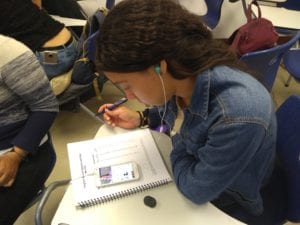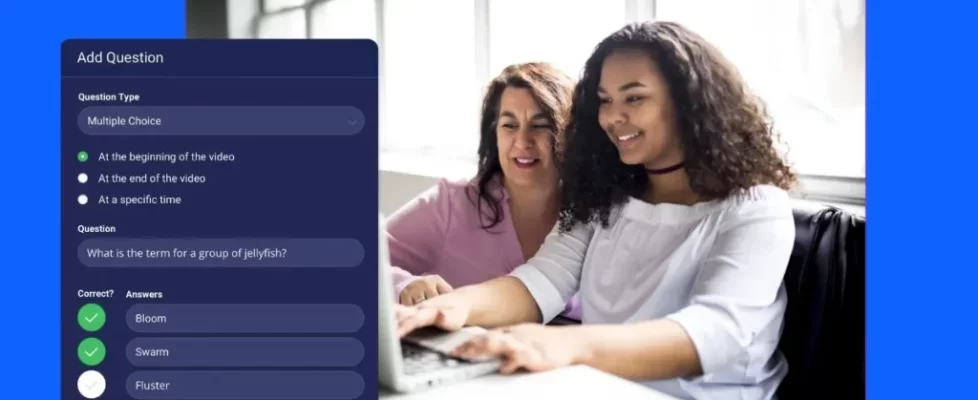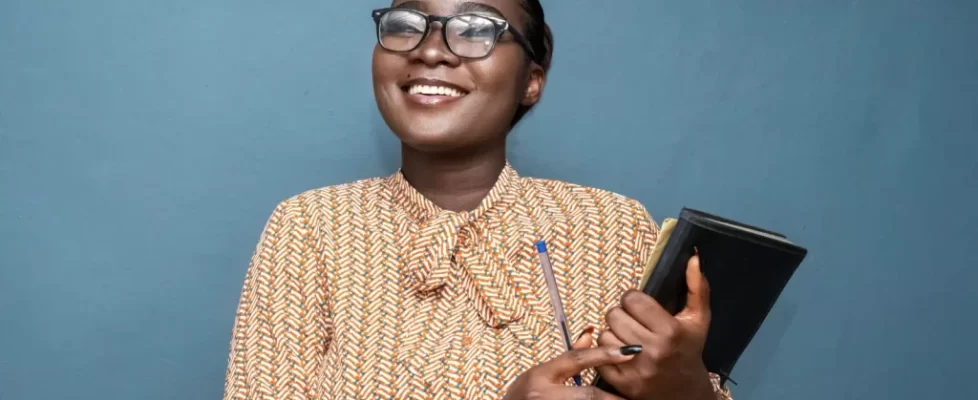 Martha Ramirez is changing the mindset of what it means to be an educator by flipping the way her students learn. The Columbian professor from Bogota teaches at the Universidad de Los Andes focusing on bilingualism and technology. She is an expert in flipped learning and took time to give us an inside look at the in-class flip, how it’s changing her relationship with students, and how ScreenPal can help you connect with your students on a deeper level.
Martha Ramirez is changing the mindset of what it means to be an educator by flipping the way her students learn. The Columbian professor from Bogota teaches at the Universidad de Los Andes focusing on bilingualism and technology. She is an expert in flipped learning and took time to give us an inside look at the in-class flip, how it’s changing her relationship with students, and how ScreenPal can help you connect with your students on a deeper level.
What is Flipped Learning and the In-Class Flip?
First, a refresher on what flipped learning is and a look at the in-class flip. A flipped classroom is a blended learning approach that reverses the traditional learning environment. The traditional method usually involves a teacher standing in front of the classroom and instructing students on class topics. Flipped learning takes it to another level. Teachers provide resources for the student to take home and review before class. The goal is for them to learn about the topic so that they are well prepared to take a deeper look at it in class.
In an In-Class flip model, the resources are provided to students in the classroom. They are able to learn a class topic in various stations (or groups) in the classroom. Depending on the student’s comprehension level, these stations can be configured to enhance learning. They can utilize their peers or learn on their own using class materials. The goal is to provide students a variety of ways and methods to learn a class topic.
Gone are the days of the traditional classroom. In the in-class flip model, students are taking education into their own hands.
Teachers around the world have contributed to evolving the concept of flipped learning, including the in-class flip. Ramirez said students have a multitude of ways to access flipped content, within different configurations.
How Flipped Learning Changed The Way She Taught

Ramirez first used flipped learning over three years ago. She decided to give this style a shot on a group of teachers she was instructing.
“I started flipping with a blended pronunciation pedagogy course I designed for a study I carried out for my Master’s degree in Education at ULA. This course was designed for English teachers in Colombia and I decided to include a flipped learning approach since I could not imagine how I would get so much information through to teachers if the face to face classes were focused on instruction instead of the application.” Her students thrived in the new set up.
There are several studies, including Ramirez’s own, that prove flipping is positive for student learning. Students feel they are gaining more when they have a choice in their absorption of content. Ramirez said she lays out her content, so students get to pick their work stations. This allows them to work at their own pace, access content from their devices, and apply in real time.
“One of the biggest benefits is that if the students are struggling at the moment they are accessing the content, I’m right there to clarify their doubts,” she said. This removes the learning barriers they could face if they were working at home alone, in their own individual space. “I’m right there to help them in the process,” Ramirez said.
The In-Class Flip
During her discovery process, Ramirez teamed up with colleague Carolina Buitrago. Buitrago also specializes in flipped learning. The two pioneers are currently working on a new book together about in class flip. You can check out a breakdown of their work here. Both professors agree one of the biggest changes with an in-class flip is the role they play in the classroom. “Students are responsible for their own learning and they’re being autonomous. So my job becomes basically to guide. To be a guide on the side, to support the process. To monitor what they‘re doing to facilitate any learning. Strategies they might need, and to clarify. So I definitely am not at the center at all in this in-class flip approach,” Ramirez said.
 Video is another component to flipped learning and Ramirez’s relies heavily on ScreenPal to capture her lessons and connect with her class. Ramirez said she can quickly and simply explain directions with her on-screen camera by using the ScreenPal application. She can breakdown concepts uninterrupted. Then the student can then refer back to the content over and over again at their own leisure.
Video is another component to flipped learning and Ramirez’s relies heavily on ScreenPal to capture her lessons and connect with her class. Ramirez said she can quickly and simply explain directions with her on-screen camera by using the ScreenPal application. She can breakdown concepts uninterrupted. Then the student can then refer back to the content over and over again at their own leisure.
“I’ll make an explanation and it could just be me showing myself saying, ‘Hi students, today I’m going to talk about this or that.’ I could flip instructions, and within a station or within a specific activity that they have to do they have to access this video through a QR code. I use QR codes or short links, so they’ll access the instructions, or they’ll access the explanation and I also like to do walkthroughs with PowerPoint presentations or using some short clips. And then follow with my voice,” she said.
ScreenPal makes it easy for Ramirez to implement all her ideas within all her stations with an in-class flip. She loves sharing her work with the application because she wants to break barriers other teachers may have when it comes to being on camera. She believes the easy to use application give teachers the ability to personalize instruction, even if they are afraid to show their face.
“Because I flip that’s one of the best ways that I have found that I can reach students. Even if they are at class or at home the fact that they see me makes them feel closer to me. As a teacher, I think that’s something worth highlighting from the process.”
Share Your Story
ScreenPal would like to thank Martha Ramirez. If you have a story to share, email our marketing team (marketing@screenpal.com).
Quick Links
Professor uses flipped learning to spark passion in students
Educator shares why video is powerful job search tool
Venezuelan Professor inspires with video technology despite country’s hardships




































